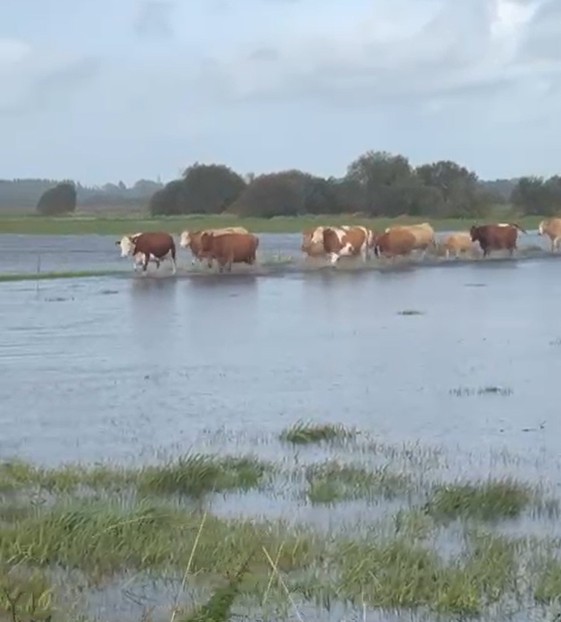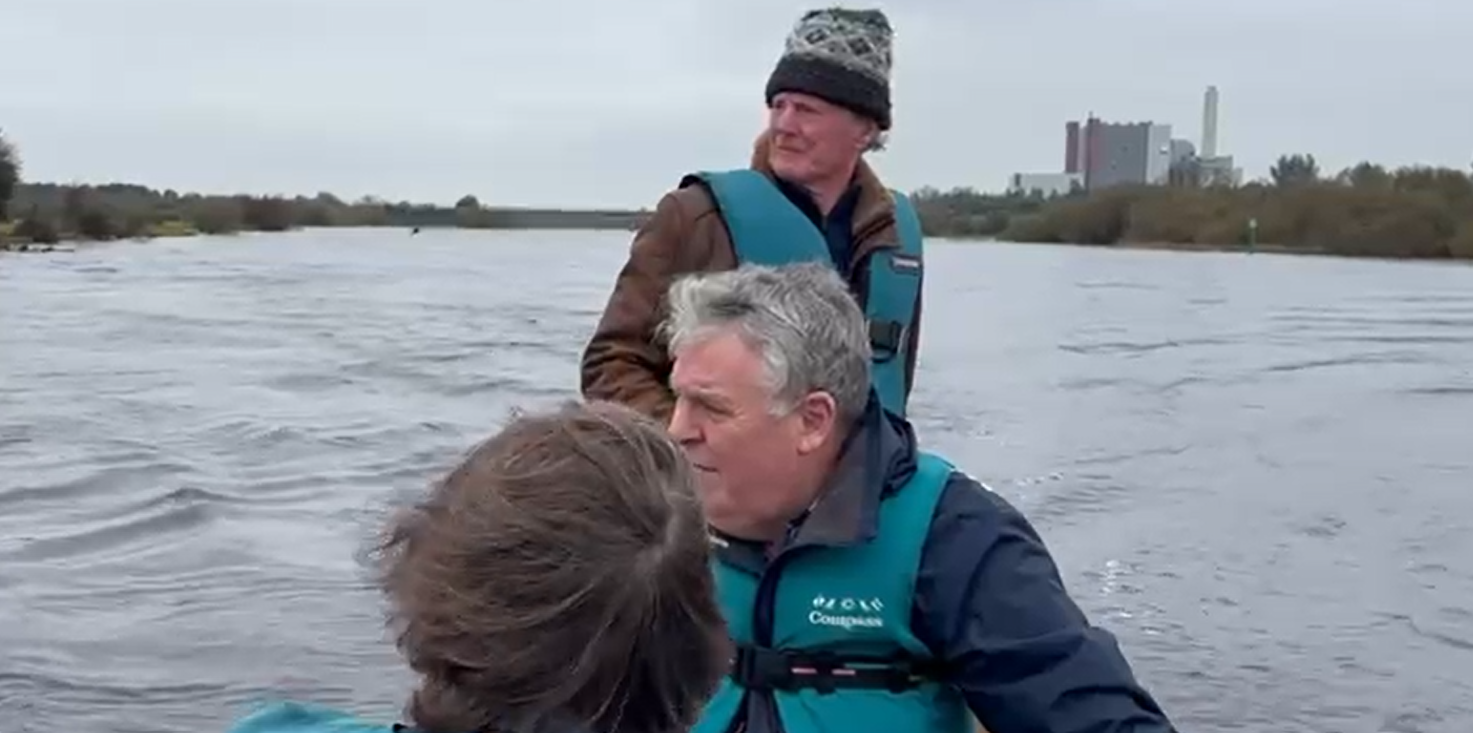
Some of the marooned cattle pictured on an island near Shannonbridge.
Nearly all the cattle marooned in the Shannon Callows have been safely guided back to fields which are not prone to flooding.
Liam Broderick, PRO of Save Our Shannon Organisation (SOSO), told the Midland Tribune that 30 cattle were marooned on islands surrounded by the rising Shannon waters following Storm Amy at the beginning of October.
“Some farmers were able to walk their livestock away from the threatened areas before Storm Amy hit,” Liam said. “After the heavy rains I was told that farmers managed to swim their cattle across drains. This was a difficult task but nearly all the 30 marooned cattle, which were in the Shannonbridge and Clonfert areas, were brought back to safer pastures. I was told there was only a heifer and a calf left marooned.”
SOSO and the farmers it represents is concerned about the long-term impact of these recurring flooding incidents, especially with the increasing frequency of heavy rainfall events due to climate change. They are calling for better infrastructure and legislative changes to address the issue. They are also critical of the state agencies that manage the Shannon. “When Storm Amy hit, a Sluice Gate at New Cut in the Lusmagh area had still not been opened,” remarked Liam. “This gate is managed by Waterways Ireland and they should have opened it earlier.” (Pictured below are a herd of cattle being walked across the rising waters, to safety, before the arrival of the heavy rains, in the Shannonbridge area).

He said SOSO was very grateful to MEP Ciaran Mullooly for highlighting the issue at a national level. They agree with Mr Mullooly's suggestion that the Shannon system should copy other similar systems throughout Europe where more effective flood warning systems are in place.
SOSO believes that flood victims' voices are being ignored by State agencies. “The Shannon Flood Risk Management Group is a state agency which consists of the ESB, Waterways Ireland, the NPWS, the OPW, various fisheries,” remarked Liam, “and we are never invited to their meetings. Surely the people who are directly suffering because of these flooding events should be allowed to attend these meetings. It doesn't make sense.”
The working group is chaired by the OPW and was established by the government in 2016 to improve co-ordination for solutions in the area.
Liam pointed out that the water in the Callows area rose by three feet in two days during Storm Amy. “It's been dropping for the last week,” he said, “but it's rising again.”
SOSO states that over the decades a lot of silt from Bord na Móna activity ran off into the Shannon system. This silt built up to such an extent that it created several pinch points and a number of islands. SOSO says it should be incumbent on Bord na Móna to remove this silt. “Wherever Bord na Móna put in silt traps in the 1990s there is not a silt problem.” (Pictured below is Michael Silke, Chairman of SOSO, and MEP Ciaran Mullooly, viewing the stranded callows livestock in the Shannonbridge area. The old Shannonbridge Power Station can be seen in the background. Michael is driving the boat).

He named three significant, problematic areas in the Shannon Callows. “If the silt was removed from these three spots it would greatly improve the flooding issue along the Shannon Callows. These spots are silt islands in the Derryholmes area near Shannonbridge; silt islands in the Shannon Grove area near Banagher; and a piece of land in the New Cut area in Lusmagh."
READ NEXT: 90 Callows farmers overlooked by flooding compensation scheme
Subscribe or register today to discover more from DonegalLive.ie
Buy the e-paper of the Donegal Democrat, Donegal People's Press, Donegal Post and Inish Times here for instant access to Donegal's premier news titles.
Keep up with the latest news from Donegal with our daily newsletter featuring the most important stories of the day delivered to your inbox every evening at 5pm.